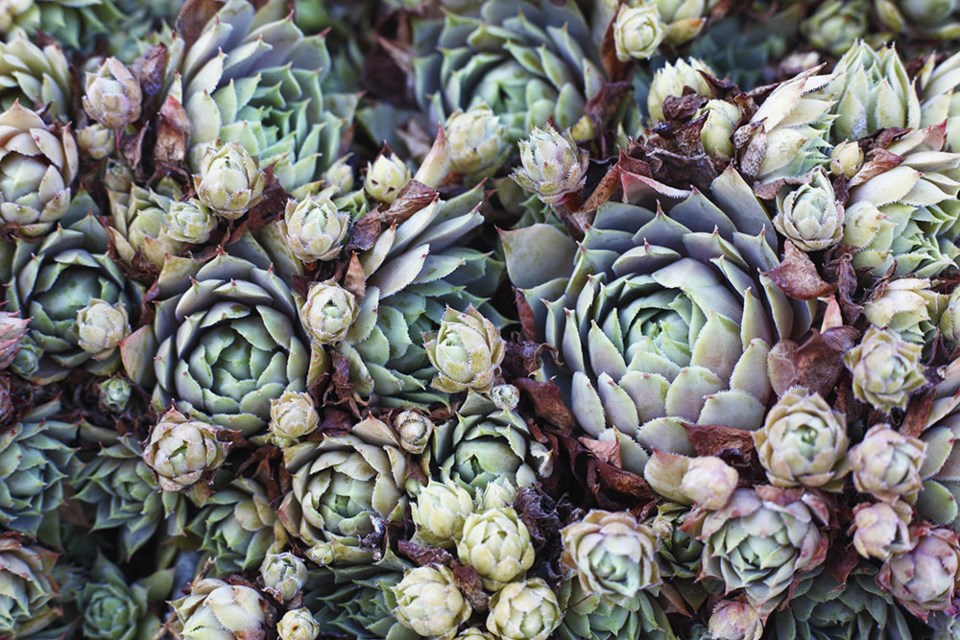When the sun is hot and there’s little time for watering, it’s a big time-saver to have drought-resistant plants in the garden – and if you know what to look for, the plants themselves will tell you how they conserve water.
Some plants resist drought because their leaves are very finely cut threads, which give virtually no moisture back into the atmosphere. The annual cosmos is one of these. Some cosmos are two metres tall, others just 20 centimetres, but all make a delicate cloud of green studded with large, usually pink or white flowers.
Another annual with filigree leaves is the blue, white or pink flowered nigella (Love in a Mist). Then there’s the perennial Coreopsis verticillata, which makes a fluffy-looking leafy mat of yellow daisies that slowly expands over the years.
At the other extreme are plants that store water in their leaves. Cactus can store large amounts but in our southwest B.C. climate, you’re far more likely to run across Sempervivums (Hen and Chickens). These grow in rosettes, which increase so thickly they shoulder out weeds.
Their colour varies from red to green. Many mix the two colours in diverse mixes of stripes or coloured tips. Sempervivum archnoidium is covered with white cobweb-like threads. All are very hardy, perennial and drought-resistant. Sometimes an older rosette throws up a scaly-stemmed, small but exotic-looking flower cluster. The rosette then dies, but younger rosettes soon fill the gap.
The annual portulaca also stores water in its succulent leaves, which are said to be edible (like the vegetable purslane). Portulaca loves poor soil and dry places. Baby portulacas need water, but they soon grow out of it and go on to produce brightly coloured little rose-like flowers despite our long summer droughts.
Needle-like leaves are another sign of drought-resistance. These include rosemary leaves and the needles of pines. Other plants have lacy leaves like yarrow, or narrow leaves like ornamental grasses and the perennial Armeria (Thrift).
Grey-leaved plants are great drought-resisters and often use more than one technique to do so. For instance Stachys lanata (Lambs Ears) has grey leaves with a wooly surface. The greyness reflects light while the fine hairs help to trap moisture. Some artemesias, such as Lambrook Silver, not only are grey but also have finely-split leaves which reduce the evaporation of water.
Other plants have a waxy surface to reduce water loss. Acanthus is one that has a thick surface skin; others, like carnations and pinks, have a thinner but still effective skin.
Some plants resist drought thanks to a long, thick taproot – oriental poppies fall into this group. Another group has fat tubers, which store enough nutriments to give them a second start after hard times – bearded irises belong here.
Bulbs usually need water during their growing season, but later, many bulbs go dormant. They developed this habit to escape long, dry summers in their native homes.
Tulips, for instance, need a dry dormancy to keep them healthy. Hardy cyclamen corms and allium bulbs prefer dry summers, too. In fact, some alliums are so eager to go dormant the leaves start drying out while the plant is still flowering.
Virtually all drought-resistant plants are sun-lovers. That’s why water-saving is so large on their agenda.
Anne Marrison is happy to answer garden questions. Send them to her via [email protected]



